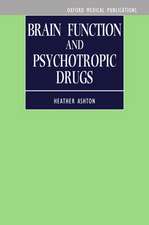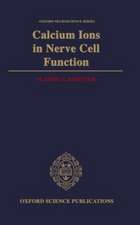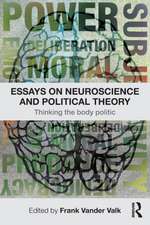Vascular Mechanisms in CNS Trauma: Springer Series in Translational Stroke Research, cartea 5
Editat de Eng H. Lo, Josephine Lok, MingMing Ning, Michael J. Whalenen Limba Engleză Hardback – 6 noi 2013
| Toate formatele și edițiile | Preț | Express |
|---|---|---|
| Paperback (1) | 956.03 lei 6-8 săpt. | |
| Springer – 23 aug 2016 | 956.03 lei 6-8 săpt. | |
| Hardback (1) | 962.35 lei 6-8 săpt. | |
| Springer – 6 noi 2013 | 962.35 lei 6-8 săpt. |
Preț: 962.35 lei
Preț vechi: 1173.60 lei
-18% Nou
Puncte Express: 1444
Preț estimativ în valută:
184.17€ • 199.98$ • 154.70£
184.17€ • 199.98$ • 154.70£
Carte tipărită la comandă
Livrare economică 23 aprilie-07 mai
Preluare comenzi: 021 569.72.76
Specificații
ISBN-13: 9781461486893
ISBN-10: 1461486890
Pagini: 471
Ilustrații: XX, 518 p. 45 illus., 28 illus. in color.
Dimensiuni: 155 x 235 x 35 mm
Greutate: 0.93 kg
Ediția:2014
Editura: Springer
Colecția Springer
Seria Springer Series in Translational Stroke Research
Locul publicării:New York, NY, United States
ISBN-10: 1461486890
Pagini: 471
Ilustrații: XX, 518 p. 45 illus., 28 illus. in color.
Dimensiuni: 155 x 235 x 35 mm
Greutate: 0.93 kg
Ediția:2014
Editura: Springer
Colecția Springer
Seria Springer Series in Translational Stroke Research
Locul publicării:New York, NY, United States
Public țintă
ResearchCuprins
CNS Barriers in Neurotrauma.- Mechanisms of Cerebral Edema Leading to Early Seizures after Traumatic Brain Injury.- Human Cerebral Blood Flow and Traumatic Brain Injury.- Gliovascular Targets in Traumatic CNS Injury.- Neurovascular Responses to Traumatic Brain Injury.- The Effects of Intravascular Coagulation and Microthrombosis on Cerebral Perfusion after Brain Trauma.- Barriers to Drug Delivery for Brain Trauma.- Angiogenesis and Functional Recovery after Traumatic Brain Injury.- Vascular Mechanisms in Spinal Cord Injury.- Neurovascular Mechanisms of Ischemia Tolerance Against Brain Injury.- Stem Cells for Neurovascular Repair in CNS Trauma.- Vascular Actions of Hypothermia in Brain Trauma.- Vascular Responses in Rodent Models of Traumatic Brain Injury.- SAH Models: Review, New Modification, and Prospective.- Age and Sex Differences In Hemodynamics In a Large Animal Model of Brain Trauma.- Neutrophils as Determinants of Vascular Stability in the Injured Spinal Cord.- Blood Biomarkers for Acute CNS Insults: Traumatic Brain Injury and Stroke.- Biomaterials for CNS Injury.- Isolated Blood Vessel Models for Studying Trauma.- Managing Edema and Intracranial Pressure in the Intensive Care Unit.- Surgical Management of Traumatic Brain Edema.- Optimizing Hemodynamics in the Clinical Setting.- Cerebrovascular Autoregulation and Monitoring of Cerebrovascular Reactivity.- Cerebrovascular Responses after Pediatric Traumatic Brain Injury.- Subdural Hematoma in Non-Accidental Head Injury.- Blood Genomics after Brain Ischemia, Hemorrhage, and Trauma.- Molecular Biomarkers in Neurocritical Care – The Next Frontier.- Bedside Monitoring of Vascular Mechanisms in CNS Trauma: The use of Near Infra-red Spectroscopy (NIRS) and Transcranial Doppler (TCD).- In vivo MRI and MRS of Cerebrovascular Function following Traumatic Brain Injury.
Recenzii
From the reviews:
“This textbook on cerebral blood flow and physiology of head injury is worth reading for graduate students, experts in the head trauma research, and also to seasoned investigators. The work is done for the historical origins, developments over the past 30 years and especially the current literature. … this is an excellent textbook for all neurophysiologists and stroke researchers from student to experts … .” (Joseph J. Grenier, Amazon.com, December, 2013)
“This textbook on cerebral blood flow and physiology of head injury is worth reading for graduate students, experts in the head trauma research, and also to seasoned investigators. The work is done for the historical origins, developments over the past 30 years and especially the current literature. … this is an excellent textbook for all neurophysiologists and stroke researchers from student to experts … .” (Joseph J. Grenier, Amazon.com, December, 2013)
Textul de pe ultima copertă
Vascular Mechanisms in CNS Trauma focuses on the vascular aspects of brain and spinal cord trauma. Twenty nine chapters are arranged in three sections—Molecular Mechanisms; Experimental Models and Methods; and Clinical Challenges and Opportunities. The first section addresses topics in the basic biology of brain and spinal cord trauma, ranging from the pathophysiology of cerebral endothelial cells and gliovascular interactions to the role of stem cells in neurovascular repair. The second section covers experimental methods in rodent and in large animal models of CNS injury, as well as the use of biomaterials and biomarkers in studying the mechanisms of tissue response. The third section deals with clinical issues in the monitoring and treatment of the patient with traumatic injury of the brain and spinal cord. Contributors to the book include an integrated mix of basic scientists and clinicians from diverse institutions. By presenting salient issues in CNS trauma from a vascular perspective, this book should make a unique contribution to the understanding of traumatic brain and spinal cord injury.
Caracteristici
Focuses on the vascular aspects of brain and spinal cord trauma Addresses basic biology of brain and spinal cord trauma Cover experimental methods in rodent and in large animal models of CNS Injury Includes supplementary material: sn.pub/extras

























